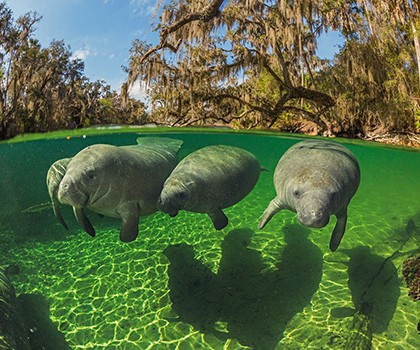PLF Victory! Feds finally follow the law and reclassify manatee
 Today, the U.S. Fish and Wildlife Service announced the final rule to downlist the manatee from endangered to threatened. This comes in response to a nearly five-year battle with PLF to get the federal government to follow its own experts’ advice and the law, and downlist the manatee.
Today, the U.S. Fish and Wildlife Service announced the final rule to downlist the manatee from endangered to threatened. This comes in response to a nearly five-year battle with PLF to get the federal government to follow its own experts’ advice and the law, and downlist the manatee.
But the roots of today’s decision go back even further to 2007, when the U.S. Fish and Wildlife Service’s status review of the manatee concluded that the species was no longer in danger of extinction (i.e., “endangered”) and thus should be reclassified as threatened. The review estimated 3,300 manatees in Florida waters at that point. But the agency ignored its own advice and did nothing. One decade later, the U.S. manatee population has doubled and the total international population reached more than 13,000.
But the manatee’s considerable improvement alone would not have been enough to get the federal government to reclassify the manatee. Rather, it took two lawsuits, and the threat of a third lawsuit, to get the agency to follow the law and the science and downlist.
The agency’s foot-dragging was not only wasteful, it was nonsensical. The manatee will still be protected as a threatened species, and it will still enjoy state and local protections. The agency had already done the research, notice, and hearings needed to downlist the manatee. Unfortunately, when it comes to recognizing that a species is no longer endangered (or even threatened), and may not warrant federal intervention forever, the Fish and Wildlife Service typically stalls.
I am glad the federal government is finally formally acknowledging what its experts first recognized one decade ago: the manatee is on the mend and no longer in danger of extinction. This is a victory for our client, Save Crystal River, Inc., a group that is restoring habitat in the river and pursues government accountability. This is also a victory for everyone who believes that the government must follow the requirements of the law.


